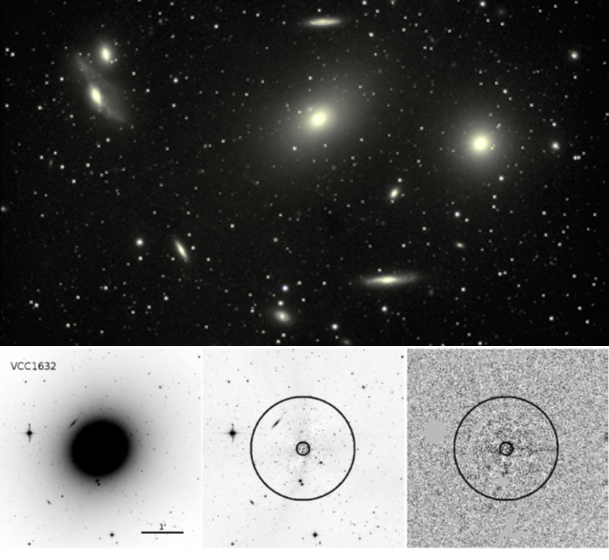The scientific activity of the researchers of the OAAb regards different astrophysical fields, as the study of stars and galaxies, and planets in the solar systems. Projects include the development of theoretical models, as well as the data analysis and the technological research in new astronomial instrumentation. The reasearch and technical personel collaborate with other national and international institutions. In the following, the list of projects.
BaSTI – a Bag of Stellar Tracks and Isochrones
 BaSTI is an homogeneous database of stellar models and parameters for a wide mass, chemical composition and evolutionary phase range. It is a fundamental tool for studying stellar populations present in the globular clusters of our galaxy, in dwarf galaxies of the Local Group, asterosismology, and for exoplanet search. The database is continuously upgraded with new physical inputs to provide the astronomical community of updated models [here the database]. A new version has been recently made available [new version of the database].
BaSTI is an homogeneous database of stellar models and parameters for a wide mass, chemical composition and evolutionary phase range. It is a fundamental tool for studying stellar populations present in the globular clusters of our galaxy, in dwarf galaxies of the Local Group, asterosismology, and for exoplanet search. The database is continuously upgraded with new physical inputs to provide the astronomical community of updated models [here the database]. A new version has been recently made available [new version of the database].
FRUITY – Full network Repository of Updated Isotopic Tables & Yields
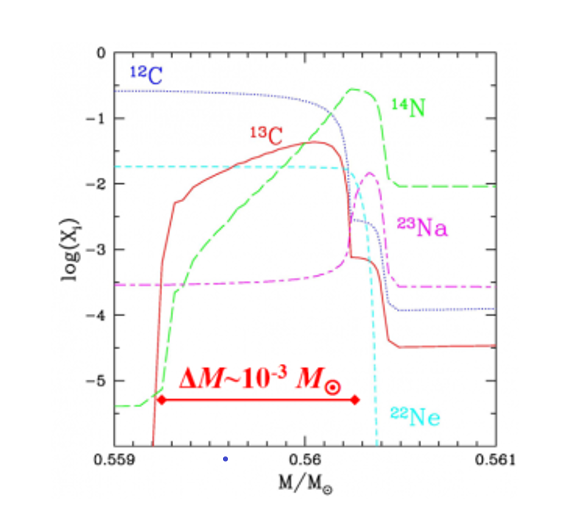 FRUITY is the only database in the world entirely dedicated to the evolution and nucleosynthesis of stars in the asymptotic branch phase (AGB). All models are calculated with the FUNS (FUll Network Stellar evolutionary code) stellar evolution code, which includes a complete nuclear network, from hydrogen to bismuth (it is therefore not necessary to resort to any post-processing technique). The rate of stellar mass loss used in FUNS is calibrated on the period-luminosity and period-mass loss relationships determined in a sample of long-term galactic variables. In the stellar envelope, … [read more]
FRUITY is the only database in the world entirely dedicated to the evolution and nucleosynthesis of stars in the asymptotic branch phase (AGB). All models are calculated with the FUNS (FUll Network Stellar evolutionary code) stellar evolution code, which includes a complete nuclear network, from hydrogen to bismuth (it is therefore not necessary to resort to any post-processing technique). The rate of stellar mass loss used in FUNS is calibrated on the period-luminosity and period-mass loss relationships determined in a sample of long-term galactic variables. In the stellar envelope, … [read more]
GRAWITA – GRAvitational Wave Inaf TeAm
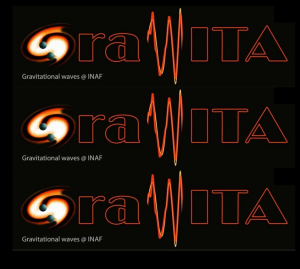 The objectives of the GRAWITA project are the monitoring and study of the electromagnetic counterparts of gravitational wave sources detected by the ground interferometer network, which includes the Advanced-LIGO detector (Laser Interferometer Gravitational-Wave Observatory) in the United States – which consists of two installations located in the state of Washington and Louisiana respectively – and the Advanced-Virgo detector located in Pisa, Italy. After the detection of a gravitational wave signal, the GRAWITA collaboration immediately launches observation campaigns… [read more]
The objectives of the GRAWITA project are the monitoring and study of the electromagnetic counterparts of gravitational wave sources detected by the ground interferometer network, which includes the Advanced-LIGO detector (Laser Interferometer Gravitational-Wave Observatory) in the United States – which consists of two installations located in the state of Washington and Louisiana respectively – and the Advanced-Virgo detector located in Pisa, Italy. After the detection of a gravitational wave signal, the GRAWITA collaboration immediately launches observation campaigns… [read more]
LSST – Large Synoptic Survey Telescope
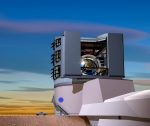 LSST is an ambitious technology project that engages the scientific community and will be fully operational over the next decade. The telescope will be able to observe the entire southern sky every three nights, in multiple photometric bands, for ten years. At the end of ten years of activity, it is expected that the sky map built with the collected data will be the most accurate and deepest available for more than half of the sky: the mapping will be not only in space, but also “in time” for objects transients. The telescope, under construction on Cerro Pachon in northern Chile, has a primary mirror of about 8.5 meters… [read more]
LSST is an ambitious technology project that engages the scientific community and will be fully operational over the next decade. The telescope will be able to observe the entire southern sky every three nights, in multiple photometric bands, for ten years. At the end of ten years of activity, it is expected that the sky map built with the collected data will be the most accurate and deepest available for more than half of the sky: the mapping will be not only in space, but also “in time” for objects transients. The telescope, under construction on Cerro Pachon in northern Chile, has a primary mirror of about 8.5 meters… [read more]
NGVS – Next Generation Virgo cluster Survey
NGVS is an observational program carried out with the CHFT telescope (Canada France Hawaii Telescope), aimed at examining an area of 104 square degrees in the region of the Virgo galaxy cluster, the largest concentration of galaxies in the nearby universe, i.e. within a distance of 35 Mpc. Thanks to an extensive coverage of the cluster, from the central to the peripheral regions, performed in five filters (u, g, r, i and z), and to the high precision in observing low luminosity galaxies, the project covers many scientific topics . Within the collaboration, the researchers … … [read more]
nTOF – Neutron Time of Fly
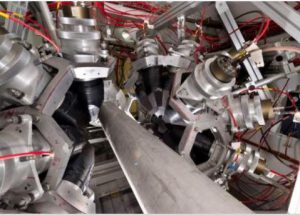 The time-of-flight experiment, nTOF, operating at CERN since 2001, consists of a pulsed neutron source coupled to two experimental areas through different flight paths (185 meters and 18 meters, respectively). The experiment was designed to study neutron-nucleus interaction in a broad energy spectrum (from a few meV to a few GeV). The wide energy range and high resolution of nTOF are unique features that allow a very precise experimental measurement of neutron capture and neutron capture induced fission cross sections. … [read more]
The time-of-flight experiment, nTOF, operating at CERN since 2001, consists of a pulsed neutron source coupled to two experimental areas through different flight paths (185 meters and 18 meters, respectively). The experiment was designed to study neutron-nucleus interaction in a broad energy spectrum (from a few meV to a few GeV). The wide energy range and high resolution of nTOF are unique features that allow a very precise experimental measurement of neutron capture and neutron capture induced fission cross sections. … [read more]
PLATO – PLAnetary Transits and Oscillations of stars
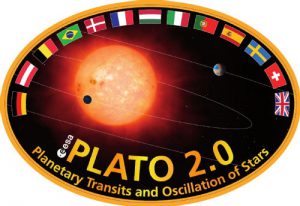 PLATO is a middle class mission (class M) studied as part of the ESA Cosmic Vision 2015-2025 program. The main scientific purpose of the mission is the discovery and study of extrasolar planetary systems through the identification and analysis of transits. The PLATO satellite will observe a large sample of bright stars and allow the complete characterization of the planets and their host stars. The use of astroseismology techniques will allow an extremely accurate measurement of some evolutionary and structural parameters, such as mass, radius and age, of the stars they host …
PLATO is a middle class mission (class M) studied as part of the ESA Cosmic Vision 2015-2025 program. The main scientific purpose of the mission is the discovery and study of extrasolar planetary systems through the identification and analysis of transits. The PLATO satellite will observe a large sample of bright stars and allow the complete characterization of the planets and their host stars. The use of astroseismology techniques will allow an extremely accurate measurement of some evolutionary and structural parameters, such as mass, radius and age, of the stars they host …
Space Debris Program
 In 1957, the launch of Sputnik-1 ushered in the era of space missions, opening up new opportunities for science, telecommunications and military defense. After half a century of space activity, operational satellites are only 10% of the amount of all objects orbiting the Earth, while the remaining percentage is made up of “space junk”. Among the “space debris” are old disused satellites, fragments of launchers, various components of space missions, and even objects lost by astronauts during human missions…[read more]
In 1957, the launch of Sputnik-1 ushered in the era of space missions, opening up new opportunities for science, telecommunications and military defense. After half a century of space activity, operational satellites are only 10% of the amount of all objects orbiting the Earth, while the remaining percentage is made up of “space junk”. Among the “space debris” are old disused satellites, fragments of launchers, various components of space missions, and even objects lost by astronauts during human missions…[read more]
SPoT – Stellar Population Tools
 SPoT is a numerical code for the simulation of stellar populations capable of providing various analysis tools, both as regards the integrated properties (spectra, classical magnitudes, fluxes, SBF magnitudes, etc …), and for the characterization of the resolved populations ( brightness functions, color-magnitude diagrams, etc …). The versatility of the code, in terms of diagnostic tools and numerical techniques, allows to reproduce observable quantities for very different environments: from open clusters and local ultra-faint dwarf galaxies to high-redshift galaxies. [database]
SPoT is a numerical code for the simulation of stellar populations capable of providing various analysis tools, both as regards the integrated properties (spectra, classical magnitudes, fluxes, SBF magnitudes, etc …), and for the characterization of the resolved populations ( brightness functions, color-magnitude diagrams, etc …). The versatility of the code, in terms of diagnostic tools and numerical techniques, allows to reproduce observable quantities for very different environments: from open clusters and local ultra-faint dwarf galaxies to high-redshift galaxies. [database]
VST Galaxy Surveys: FDS & VEGAS
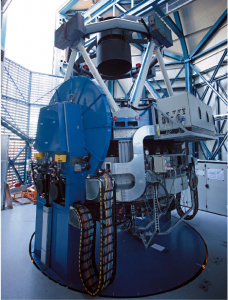
The VLT Survey Telescope (VST) is a telescope of the European Southern Observatory (ESO, European Southern Observatory) located on Cerro Paranal in Chile. It is equipped with a wide-field imaging chamber, ideal for observing campaigns of large regions of the sky. . The OmegaCAM chamber of the VST covers an area of about 1 × 1 square degrees, allowing to observe regions of the sky equal to about four times the angular dimensions of the full Moon. INAF-OAAb researchers participate in various observation campaigns with the VST, including the Fornax Deep Survey (FDS) and the VST Elliptical…[read more]
Credits. GRAWITA: GRAWITATeam. LSST: Todd Mason, Mason Productions Inc./LSSTCorporation. NGVS: CFHT,CEA,NRC/HIA,CADC,NGVSTeam. n-TOF:nTOF/Cern. VST: ESO.

